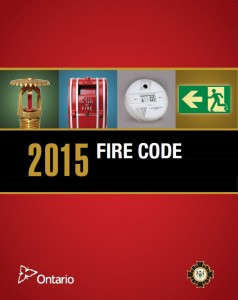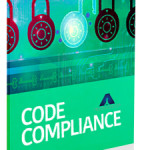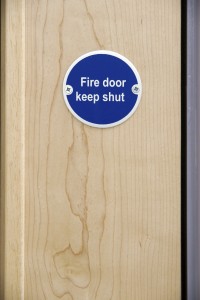Daylight savings time starts on Sunday, March 13 at 2:00am.
Whenever the clocks go forward or backward, it’s a good time to test your smoke alarms and familiarize yourself with the Ontario Fire Code (OFC) and the Ontario Building Code (OBC).
 Who must follow the fire code?
Who must follow the fire code?
The short answer is everyone.
If you own or manage/rent out a:
- Residential home
- Apartment complex
- Commercial building
- Retail business location
You’re bound to follow Ontario’s fire regulations when it comes to designing, building and choosing materials for the buildings you’re responsible for.
Fire code basics
First and foremost, any building must have a working smoke detector on each floor. So if you live in a 3 story house, you must have 3 working smoke and fire alarms.
Secondly, the fire code has specific guidelines when it comes to installing door locks & accessories for the home and commercial door locks:
- Unrestricted egress: Any door that’s used as an exit from a building must be easy to open. Any devices, locks are other features which can confuse someone from opening the door properly are forbidden.
- Fire and smoke protection: Only certified fire doors may be used in any building in Ontario. Once they’re installed, any modifications made to them must not interfere with how they work or limit their effectiveness.
- Door closers: Any apartment building that’s taller than 6 stories must have an automatic door closer for each residential door in the building. This is to ensure that in case of fire in an apartment unit, the door automatically closes and limits the spread of smoke and flames.
 Download our FREE eBook on Code Compliance in Ontario
Download our FREE eBook on Code Compliance in Ontario
More about fire door requirements
Both the OBC and OFC dictate that fire doors are installed in:
- All building exits
- Hallway doors
- Laundry rooms
- Garbage or recycling rooms
Fire doors must be certified and properly installed by fire door experts.
All modifications made to a fire door must first pass inspection. Otherwise, the fire door will no longer be considered certified.
Lastly, fire doors must have a self-closing mechanism that ensures maximum protection even when the door’s room is occupied.
Door latches and lock requirements
Your egress doors may have additional commercial access control features to prevent unwanted entrance into your building.
There’s nothing wrong with that if they don’t get in the way of allowing for easy egress. That goes for doors which swing in both directions.
Lastly, any door latches or locks must be designed so that any panicked or distressed person (including children and the disabled) can exit quickly. Even in the dark.
Ask the experts at Aim Lock & Safe
The above information is just a small snippet of the Ontario Building Code and Ontario Fire Code.
There are many more components to them.
At Aim Lock & Safe, we’re experienced when it comes to code requirements and fire safety standards for residential and commercial properties.
Since you’re checking your smoke alarms anyway, why not call us for a FREE consultation?
We’ll make sure your home or business complies with all provincial building and fire codes.








